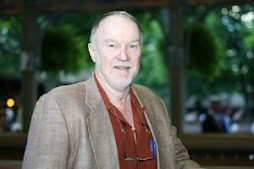Who knows what it really means at the Fasig-Tipton Kentucky July sale, though. Historically neither Darley nor Coolmore buys large numbers of horses on Newtown Pike, but consignors always have a bit more hope when the big dogs are on the loose.
But mostly, FTK July is not that kind of sale. Pinhookers are everywhere, if for no other reason than the sales company caters specifically to them in the horses they select. A horse chosen for a yearling sale in July, by definition, has to be precociously mature, which, historically, is exactly what pinhookers have to have, even among their two-turn horses.
One veteran, highly successful pinhooker told me that he thought this is the best collection of horses he has seen at FTK July. I'm sure if I'd asked around I could have found another pinhooker who thinks it's the most useless collection of manes and tails in history, but, from my own somewhat casual observations, there are plenty of attractive racehorses here.
The one horse that tickled my fancy the most has absolutely no chance of topping the sale. From the late '70s through the 1980s and early '90s, maybe 25% or more of select yearling sales would be small to medium-sized, muscular, typey, elegant, refined horses with tremendously athletic walks, horses that looked like their sire (or grandsire), the immortal Northern Dancer. Although the Northern Dancer male line remains powerfully prominent, that physical type has all but disappeared from yearling sales.
The shift began with the bloodstock crash of the late '80s, when Sheikh Mohammed, Coolmore, Stavros Niarchos, and other big European-based buyers cut back their buying severely at American auctions. American commercial breeders shifted their focus to American dirt sires, away from the European-raced champions who had dominated the sales rings in the '70s and '80s. Yearling sales--or at least American yearling sales--are now dominated by big, powerful horses who are likely to be suited to dirt racing. That may change over the next few years because of synthetics, but that has certainly been the trend for most of the last 20 years.
Four Star Sales's High Cotton colt out of Echo Bluff, by Pine Bluff, is a throwback. He would have fit right in at a mid-1980s yearling sale. He bears the mark of Northern Dancer proudly. High Cotton was a good, honest racehorse, and his sire, Dixie Union also resembles his grandsire Northern Dancer, but High Cotton is not on anyone's list of prospective sires of sale toppers.
His son at FTK July is inbred 4x6x4 to Northern Dancer, but the percentage of horses in the breed inbred to Northern Dancer is rapidly approaching 50%, so that is no real explanation.
The new DNA testing services are useful aids in selecting horses, but they have little to say so far about such genetic mysteries. Some day that may change, but, thankfully, atavistic wonders can still delight us and inspire a stroll into nostalgia-land.


No comments:
Post a Comment